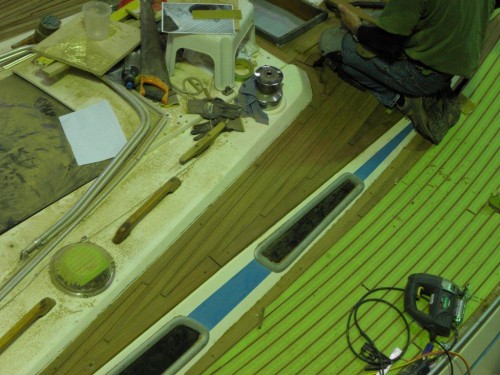Do you want to be informed on new Posts on this Thread? (members only)
| S&S Swan Maintenance - Swan 41 earthing plate |
|---|
|
Join Date: 01 January 2011
Posts: 36 |
||
|---|---|---|
|
Swan 41 earthing plate  |
|
Join Date: 01 February 2007
Posts: 234 |
||
|---|---|---|
|
Andrew, as Blakes seacocks are usually all one metal and not attached to anything metalic, they are not in my experence bonded to any earth. You need to check how your engine is wired now, eg my Perkins M65 is twin pole insulated return, the P Bracket and stern tube are bonded to the engine. My yacht also had a Faraday cage fitted which caused me and the yard some confusion interms of what all the earthing wires did. The forestay and shrouds are bonded to the keel. The backstay is used as a SSB ariel so not part of the Faraday cage. |
|
Join Date: 01 January 2011
Posts: 36 |
||
|---|---|---|
|
Thanks John, I am at "a little bit of knowledge can be dangerous" stage so not sure of implications around the engine earth, I hope as the original Perkins it will be ok but will ask the yard to check. Do you have any idea about a stainless plate on the bottom of the keel? Cheers, Andrew 41/039 |
|
Join Date: 19 July 2007
Posts: 66 |
||
|---|---|---|
|
Andrew. The "stainless plate" at the bottom of the keel is a grounding shoe. Grounding, as in "going aground" not electrical grounding. The bottom of the keel and the thin trailing edge is strengthened by stainless steel plates to protect the soft lead of the keel, from damage. All the other keels I have seen have been painted. regards Paul 411 042. |
|
Join Date: 02 January 2008
Posts: 1547 |
||
|---|---|---|
|
Dear Andrew
|
|
Join Date: 01 January 2011
Posts: 36 |
||
|---|---|---|
|
Dear All, thank you very much for your advice which much appreciated and understood, a couple less things to worry about that I can now cross off my list which is growing shorter!
|
- Threads : 1702
- Posts : 10217
- Members: 821
- Online Members: 1

